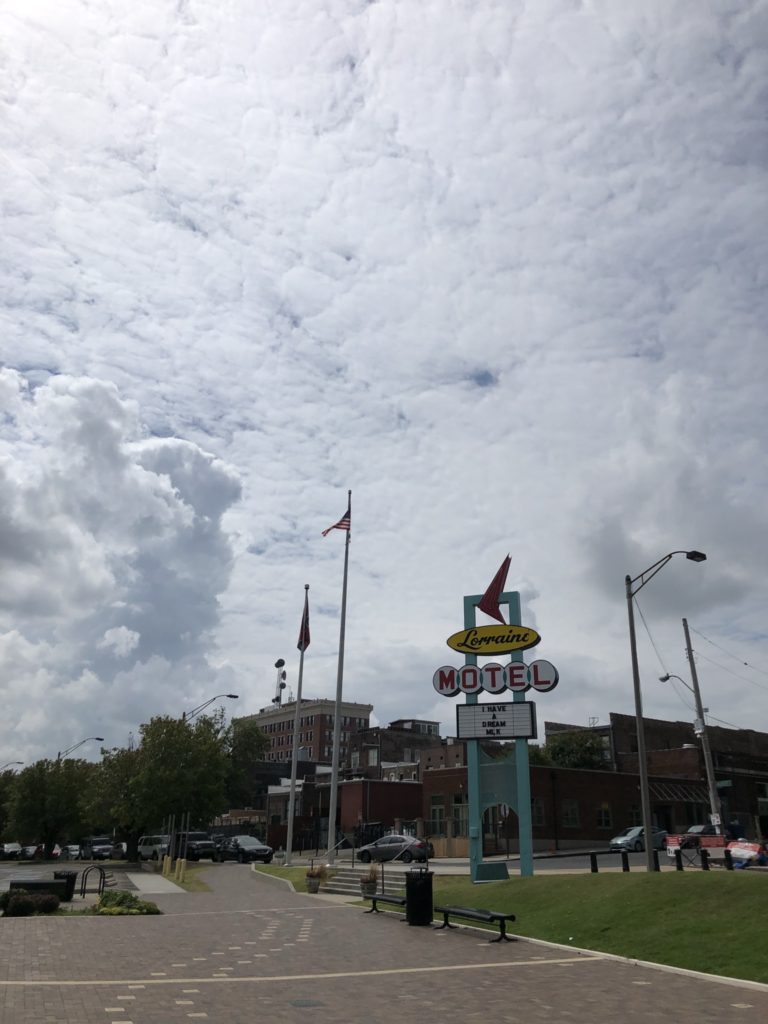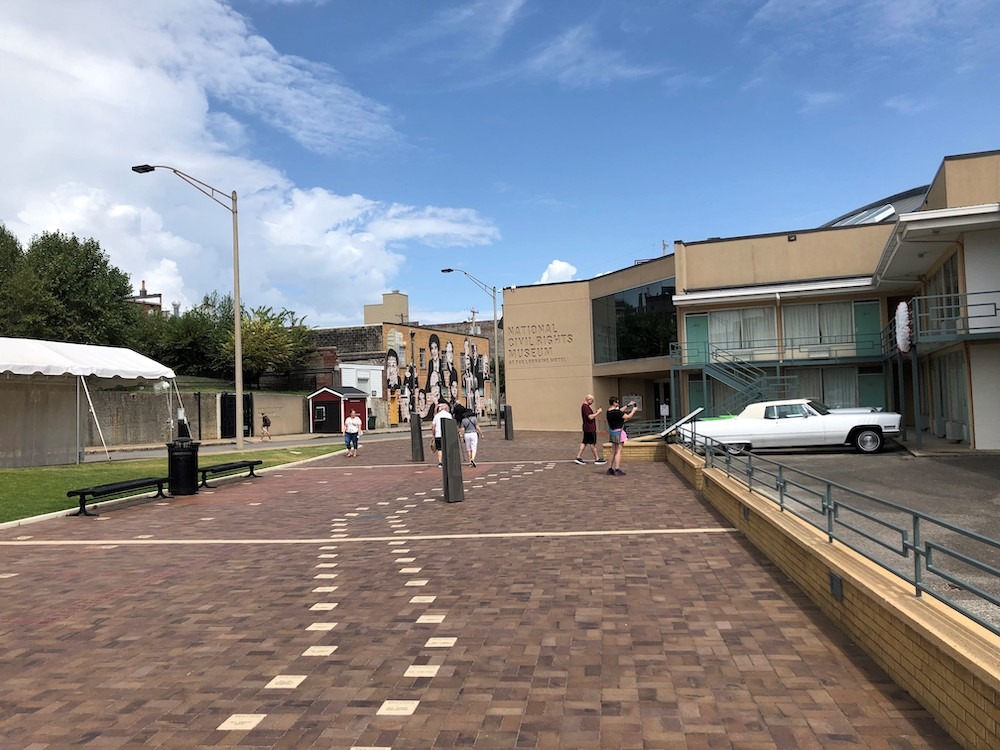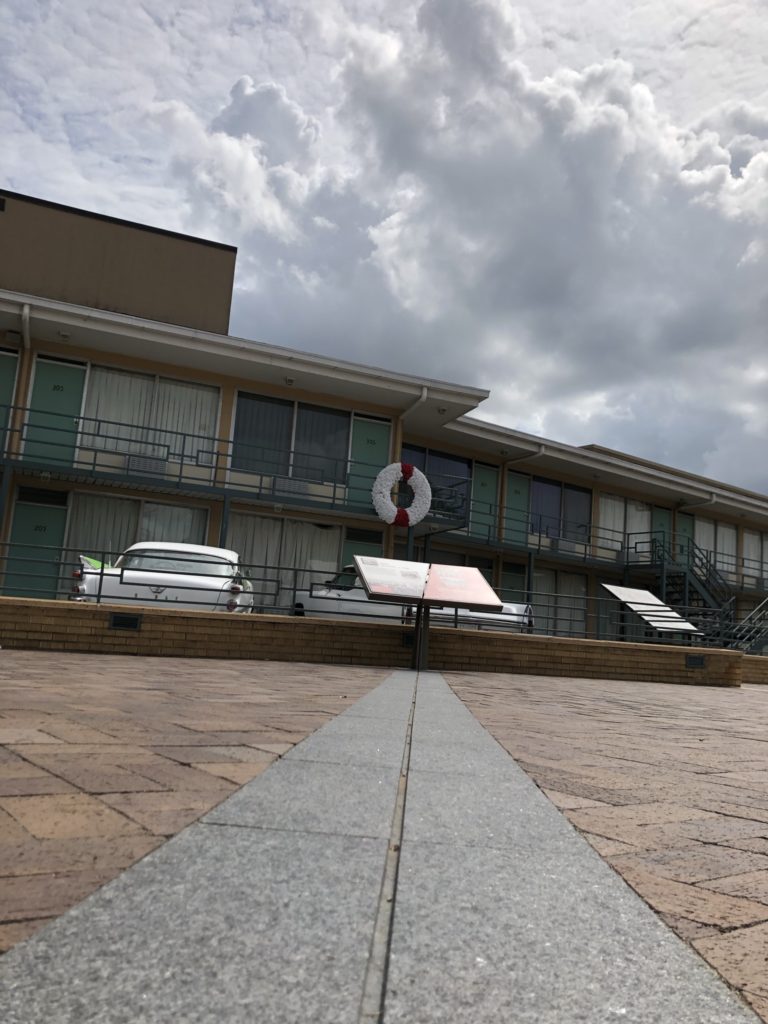On The Level: Keson and SOLA: Memphis, Meetings and Moments That Matter
Words: Todd Fredrick
Jude Nosek
My grandfather, Keson’s founder Roy Nosek, told me a story about perspective when I was a boy. It has stuck with me over the years. I am now North of 50, probably close to the age he was when he told me. I have told this story to my children and sometimes to others. I have heard a similar tale about many builders, architects, even other professions, so I am certain it’s an old story and has been co-opted by many to illustrate a simple truth: how you choose to see what you do is important. This is close to how I heard it first:
Life is not measured by the number of breaths we take but by the moments that take our breath away. –Maya Angelou
This article is about such a moment. It is about a moment in a very interesting week, a moment that helped me experience for an instant the passion many of you masons have for your craft. The spark of insight came from a well-designed memorial, artistically executed by a mason. It happened during the MCAA Mid-Year Meeting week in Memphis. The location was the National Civil Rights Museum (formerly the Lorraine Motel). Like so many of the profound instances in my life, I was not expecting this one, and I am still making sense of it.

On April 4, 1968, Martin Luther King, Jr. was assassinated in Room 306 of the Lorraine Motel in Memphis. This event took place before I was born. I have only seen footage and pictures of this event and Dr. King. I have only seen the images, like one of half a dozen distressed people pointing away from this balcony. I have only heard stories from people who have met Dr. King and who have heard him. I have only read about his work, his life, and his death. This article is not about Dr. King or the Civil Rights Movement. More eloquent and qualified people than I can and will share their reflections on Dr. King and all he touched. This is about what happened to me as I stood at the place of his death, reflecting on that information. What happened to me was made more relevant and more profound by the design and execution of that memorial.
We were in Memphis for the MCAA Midyear Meeting. For the first time, our Keson/SOLA team was attending, and we were very excited. The wonderful crew at the MCAA had prepared us. However, as we all know, talking someone through the events to come is very different from the events themselves. So too, it was with this preparation. On early Tuesday, while many members of the MCAA were golfing and my Keson/SOLA teammates were visiting local accounts, my wife, Susie, and I had some free time. The weather was beautiful, though hot and a bit muggy. The blue sky was filled with mountainous clouds, alternately providing cool, welcome shade and letting through brilliant blasts of sunshine. We decided to walk around Memphis and to go to lunch. Susie requested that we stop by The National Civil Rights Museum on our way back to the Peabody. We did.

When we got there, The Museum was closed, as it is every Tuesday and Wednesday. Don’t let that stop you from visiting. There certainly is enough to see if you are paying attention, as I was to find out.
The former parking lot of the Lorraine Motel is now a red-brick entranceway to The National Civil Rights Museum. As we approached The Museum doors, we encountered a few stainless-steel kiosks. Etched onto these silent sentinels were faint, ghostly images of faceless protestors. They carry signs reading “I Am a Man.” They also housed video screens that told us what was happening in the country and Memphis in the days leading up to Dr. King’s assassination. Moving from kiosk to kiosk, we physically neared the entrance. As we moved, the stories brought us closer to the time of the assassination. Eventually, we stood before Room 306.

One story up was a concrete balcony and a gray art deco metal railing, upon which hung a wreath, which looked like a life preserver. Parked at ground level, where we stood in front of Room 206, were two automobiles from the era. On a low brick wall, a railing of the same design separated us from the cars. Before us, on an angle to ease its reading was a rectangular plaque with information about Dr. King’s assassination. One of the images on the plaque was the picture I mentioned earlier, a half dozen people pointing. The plaque wasn’t a solid rectangle; it was cleaved into two halves. Not in squares as one might expect, but rather at an angle and in a way that caught our attention because it seemed odd. The fingers of the people in this picture were directed at this cut. I tried to make sense of the design choice when Susie whispered, “Do you see?” and she gestured to the bricks upon which we stood.
When I finally did see, it took my breath away.
Running across the brick entrance to The Museum, at an angle and in a way that now caught our attention because it seemed intentional, was a track of blue-marble bricks. That blue-marble track ran through the red bricks away from Room 306. It ran through the street, it ran across the sidewalk on the other side of the street, and it ran under a fenced entrance to the building which stood opposite The Museum.
As I looked closer, I saw something else: there was a channel, a space, a line captured within the blue-marble bricks.
I realized that the track was not running away from Room 306, but rather, it contained a line that ran toward Room 306. My eyes scanned back along the line in the blue marble from the building across the street toward the place where Dr. King stood for the last time. My eyes passed over the plaque, sliced by that incongruous line. The picture on that plaque—the picture of the pointing witnesses—silently insisted, “There! There! Do you see?!” My mind caught up with my eyes and with my observations as I traced that line for the third time. Finally, I saw, and I understood.
The line was the path of the bullet.
The blue marble held the permanent path of the bullet that ended Dr. King’s life. All of this was captured in the very construction of the memorial. A few days later, I attended the MCAA Hall of Fame dinner and listened to family members talk about the masons in their lives. I thought about my experience at The National Civil Rights Museum. I recalled that disturbing and poignant reminder rendered subtly and beautifully by a mason I will likely never meet, whose craft touched me profoundly. I am still thinking about it. I have a lump in my throat as I am writing this.
I am often amazed and am always grateful when my veil of ignorance is parted, and I can see something beautiful. My emotions well up before I can contain them. I find it hard to breathe at such times. It is then that I am grateful for Maya Angelou. She reminds me that that’s okay because that’s how we measure our time here.
For more information on The National Civil Rights Museum:
https://www.civilrightsmuseum.org/
About SOLA-Messwerkzeuge GmbH: For 70 years, the brand SOLA has meant high precision measuring and marking tools. As market leader in premium spirit levels, the Austrian company manufactures various products, including screeding levels, folding rules, long and short tapes, squares, marking products, laser distance meters, and a customized laser program. SOLA Measuring Tools is globally present in 70 countries around the world. 75% of all products are manufactured in Goetzis, Austria, where the headquarters and production facility are located. Find out more at sola.us.